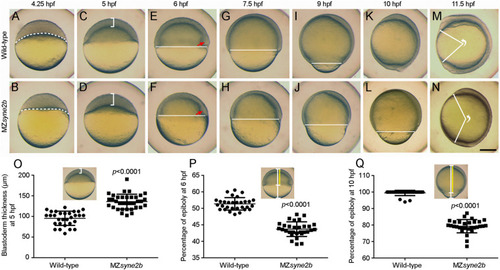FIGURE 3
- ID
- ZDB-FIG-210707-5
- Publication
- Li et al., 2021 - Syne2b/Nesprin-2 Is Required for Actin Organization and Epithelial Integrity During Epiboly Movement in Zebrafish
- Other Figures
- All Figure Page
- Back to All Figure Page
|
Disruption of Syne2b function impairs epiboly movement and anteroposterior axis elongation. Live images show epiboly initiation and progression in time-matched embryos. Lateral views with animal pole or anterior region on the top. |
| Fish: | |
|---|---|
| Observed In: | |
| Stage Range: | Sphere to 1-4 somites |

